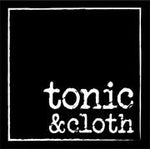
JUN 12th

I’m no Eco warrior. I’m open and interested, but I’ve failed more times than I’ve succeeded. My compost bin got off to a flourishing start until hubby moved it to mow the lawns – it’s been in pieces since then. I can’t work out how to click it back together. And then there was the worm farm massacre of 2015, need I say more. I learn at a snails pace. The seeds of change grow slow in me; at times dying off in harsh, drought-like conditions before they even sprout.
The first time I came across organic cotton I was in London on my big OE – drawn into an exhibition up a tiny side street. Some hopeful looking punters were trying to spread the word about the merits of organic cotton. Their enthusiasm was somewhat lost on me. Why, I wondered, would I invest in an organic cotton t-shirt, I mean – it wasn’t like I was going to eat it. In my twenties and on a nanny's wage I could barely get my head around paying significantly more for organic produce. The thought of spending hard earned cash on organic clothing was a hard sell.
The organic cotton seed had unfortunately fallen on stony ground with me.
Later I moved back to NZ. This time settling in a small town where I met an incredible bunch of people who grew their own veges, made their own skincare products and drank raw milk. I was fascinated. Watching and learning from them got my brain ticking again about that organic lot in London.
I too started growing my own veges. The process began to speak to me. If I was going to put this stuff in my mouth at the end of the growing season I wanted to make sure it was safe. If I was going to go to all this effort I wanted to make sure I was growing the best. So I started with organic soil and organic seeds – I added sunshine, water and time – next thing I knew I was eating what I’d grown a few steps from my front door, from soil and seeds I trusted.
When I became pregnant with my first child, niggly periphery concerns took centre stage. I’d read a study talking about the chemicals found in breast milk. It made me recall once again that day in London, and the enthusiasm of the organic cotton proponents. Maybe they were making a fair point, maybe there was something to this organic cotton malarkey after all. Maybe it did indeed matter what we put close to our skin. And more than that, certainly it mattered what the cotton farmers were touching, inhaling, and bringing home with them on their skin at night.
It wasn’t until last year that I switched once and for all to organic cotton underwear. I mean, if you’re going to start somewhere it might as well be around the important bits! And this week I bought my first piece of organic denim, the jeans are halfway finished and I’m excited. My theory is - switch high use items first, and surely there is nothing higher use than underwear and jeans!
While it’s taken me time to get my head around this organic thing in my personal life. In business it will be much faster. It needs to be. The stakes are high. The flow on effects of each decision far reaching. What that little London exhibition was trying to say is true - cotton growing is chemically intensive. These enormously toxic chemicals have an undeniable impact on air, water, soil, and the health of people.
The impact is real, it’s personal.
This is not about creating an 'eco-brand'. This is about, wherever possible, making good decisions for my family and my business that will flow on to the planet. I don’t want Tonic & Cloth to simply add to the frenetic milieu of fast fashion. I want to listen, and be fertile soil for seeds of positive change - if there is a way to do things better, then I want to know how.

Leave a comment